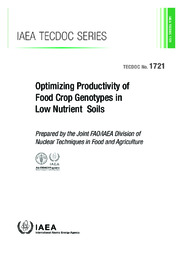Phosphorus use efficiency by brazilian upland rice genotypes evaluated by the 32P dilution technique.
Phosphorus use efficiency by brazilian upland rice genotypes evaluated by the 32P dilution technique.
Author(s): FRANZINI, V. I.; MENDES, F. L.; MURAOKA, T.; SILVA, E. C. da; ADU-GYAMFI, J. J.
Summary: The objectives of this work were to identify the most efficient upland rice genotypes in phosphorus (P) utilization, and to verify if P from the seed affects the classification of upland rice genotypes on P uptake efficiency. The experiment was conducted in a greenhouse of the Center for Nuclear Energy in Agriculture (CENA/USP), Piracicaba, São Paulo, Brazil, using the 32P isotope technique, and plants were grown in pots with samples of dystrophic Typic Haplustox (Oxisol). The experimental design was completely randomized with four replications. The treatments consisted of 47 upland rice genotypes and two standard plant species, efficient or inefficient in P uptake. The results were assessed through correlation and cluster analysis (multivariate). The Carisma upland rice genotype was the most efficient in P uptake, and Caripuna was the most efficient on P utilization. The P derived from seed does not influence the identification of upland rice genotypes in P uptake efficiency.
Publication year: 2013
Types of publication: Book sections
Unit: Embrapa Eastern Amazon
Observation
Some of Embrapa's publications are published as ePub files. To read them, use or download one of the following free software options to your computer or mobile device. Android: Google Play Books; IOS: iBooks; Windows and Linux: Calibre.
Access other publications
Access the Agricultural Research Database (BDPA) to consult Embrapa's full library collection and records.
Visit Embrapa Bookstore to purchase books and other publications sold by Embrapa.

